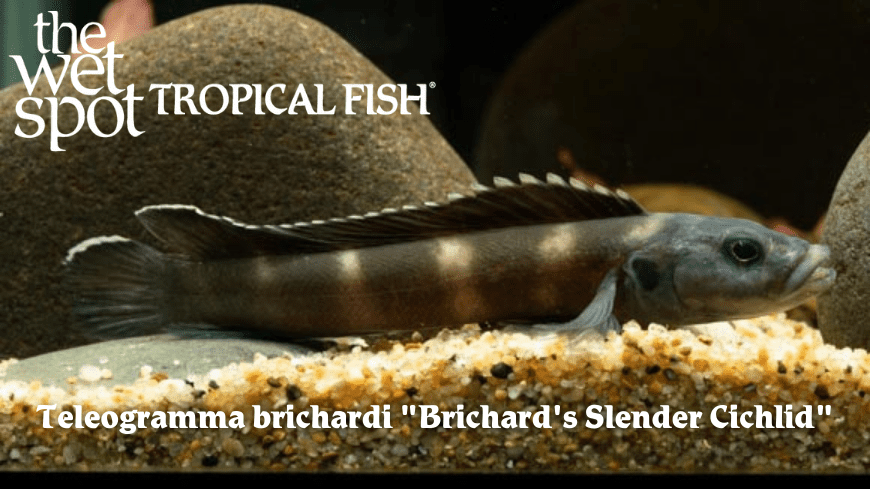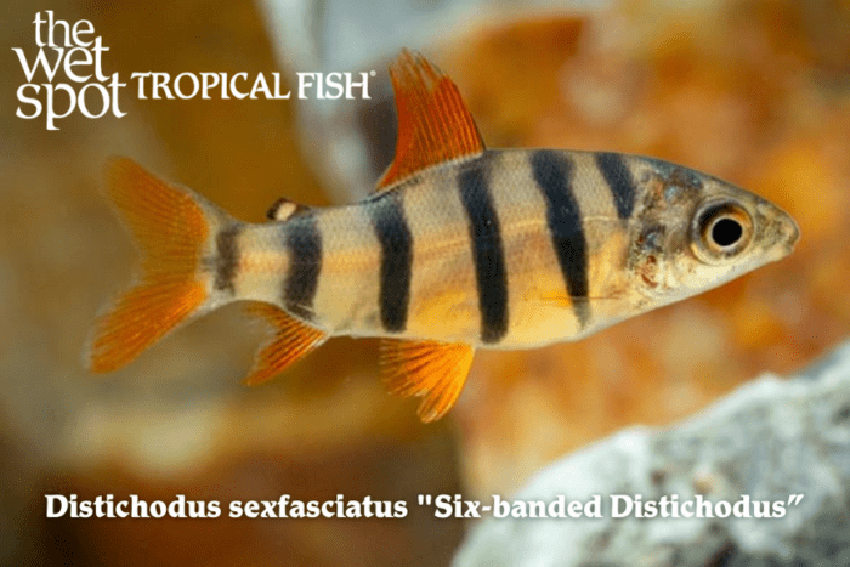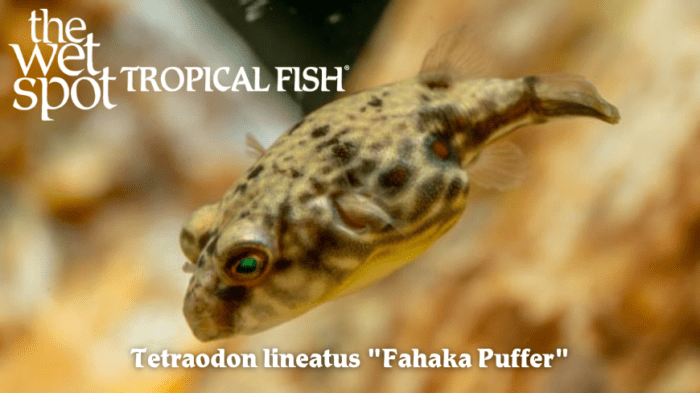Body Posi-Fish-Ity
Great news aquarists – Popular culture is finally catching up to fish culture! Specifically, the understanding that there isn’t an “ideal” human form is quickly becoming the norm. This is hardly a new notion to fish-lovers like us, as we’ve always appreciated the subtle differences in body form that confer unique functions and adaptations among our fishy friends. Long fish, short fish, wide fish, flatfish, round fish, and all other possible variations have their place in the environment (and in our hearts). In celebration of all body types, we present to thee: Teleogramma brichardi, Distichodus sexfaciatus, and Tetraodon lineatus.
A fluviatile species from the lower Congo, T. brichardi is one of just five species in its genus. All Teleogramma have specialized anatomical features that allow them to thrive in fast-flowing rapids. Sporting a cylindrical, elongate form, this almost snake-like Cichlid has a flexible spine that allows them to slither along with the current, and a reduced swimbladder keeps them close to the rocky stream bottoms as the river rushes above. This species reaches up to 5 inches in length and exhibits wide grey-blue heads with big lips, light striping over grey bodies, and sooty black tails. A sexually dimorphic Cichlid, adult females have pink chests and a white edge to the caudal fin. During spawning, which occurs in caves, their colors intensify and really pop! Tanks should be set up to simulate fast-flowing streams with sandy substrate, lots of water-worn rocks along the bottom to form caves and crevices, hardy rhizome plants attached to hardscape, and a strong filtration system to keep waters pristine and moving. Territorial by nature, this species should be housed in long tanks with lots of space and broken-up territories along the bottom. Not particularly tolerant of one another, this species is best maintained in single pairs, and may be housed alongside medium-to-large-sized African river community species like Congo Tetras, Barbs, Bushfish, and similarly-sized (but not benthic) river Cichlids. As carnivorous micropredators, they consume live foods from the substrate and should be fed mostly frozen invertebrates (especially if breeding), and high-quality flake and pellets. Tank waters must be scrupulously clean with temperatures between 68°F and 78°F, a pH between 6.0 and 7.5, and a hardness of 125 to 178 ppm.

Scientific Name:
Teleogramma brichardi
Common Name:
Brichard’s Slender Cichllid
Temperature:
68° – 78° / 6.0 to 7.5 pH
Native Location:
The lower Congo
Preferred Diet:
Carnivore
Streamlined for stream-life, D. sexfasciatus exhibits a fusiform body shape with a torpedo-pointed snout that cuts through flowing open waters. An active swimming species, the “Six-banded Distichodus” is high-backed with a diamond shape – this rhomboid shape varies quite a bit among the 25 valid species of its genus depending on the degree of water flow in their geographic range. As their common name suggests, this species has six black vertical bands down their sides with beauteous burnt-umber colored fins. This species can grow up to 30 inches in the wild but generally only reaches about 16-24 inches in captivity. This makes it suitable only for large tanks with some flow, lots of open swimming space, and tight-fitting lids. Otherwise, tanks should have areas of cover along the bottom from furnishings like driftwood, rocks, and shale piles. All but the toughest-leaved aquatic vegetation is likely to be eaten, so choose your plants with care! Omnivorous foragers leaning toward the herbivorous side, this species should be fed a highly vegetal diet with items like peas, blanched spinach, spirulina, and flake foods, along with regular live and frozen treats. Somewhat aggressive and boisterous as adults, juveniles may be kept in small schools, though larger individuals should be maintained in sparse groups with lots of space. A tad nippy, they may be kept with those who are not easily spooked or cowed like Bichirs, Loracariids, large Characins and Cyprinids, and sturdy Cichlids. Tremendously tolerant, tanks should be kept with a pH between 6.0 to 8.0, a hardness between 178 and 356 ppm, and temperatures of 72°F to 79°F.
Scientific Name:
Distichodus sexfasciatus
Common Name:
Six-banded Distichodus
Temperature:
72° – 79° / 6.0 to 8.0 pH
Native Location:
South America
Preferred Diet:
Omnivore

Restricted to the forest streams of the Greater Sunda Islands, Trigonostigma hengeli is our delicate salad course. Commonly referred to as “Narrow Wedge Rasboras”, they reach up to 1.5 inches in length and have light, almost translucent bodies with a…you guessed it…narrow wedge of purple with a thin red border down their sides.

Scientific Name:
Tetraodon lineatus
Common Name:
Fahaka Puffer
Temperature:
75° – 82° / 6.0 to 8.0 pH
Native Location:
Lakes and rivers of Northern Africa
Preferred Diet:
Carnivore
